How to hide heating pipes: we analyze the types of boxes and decorative trims
It is difficult to imagine a living space without heating communications that allow you to maintain a comfortable air temperature.At the same time, the appearance of these elements can hardly be called aesthetic; they are often discordant with the sophisticated interior, breaking out of the general style.
We will tell you how to hide heating pipes in an original, most simple and affordable way. The article we presented describes in detail the options for camouflage using boxes and decorative overlays. Taking into account our tips, you can easily give the room a harmonious, cozy look.
The content of the article:
Various types of pipe camouflage
There are various ways to hide elements, allowing apartment residents to show creativity and imagination.
The most popular ones include:
- creation of closed heating systems;
- masking heating elements with furniture;
- arrangement of boxes in which communications can be hidden;
- decorating pipes using overlays and other design elements.
To create closed systems, all pipes passing through the apartment are removed into channels specially made in the walls, after which the contours are sealed with plaster.
This method requires the ideal quality of communication elements: even minor defects over time can cause leaks and breakthroughs that are difficult to repair. Particularly dangerous in this regard are metal-plastic pipes, for which fittings are used, but leaks are also possible in steel or copper pipelines in case of non-compliance with welding technology.
When camouflaging, communication networks are covered with household appliances and furniture, located behind a cabinet, under a sink or sink. Such a solution is easy to implement in the kitchen, but in living rooms, especially those designed in the spirit of minimalism, this is often difficult.
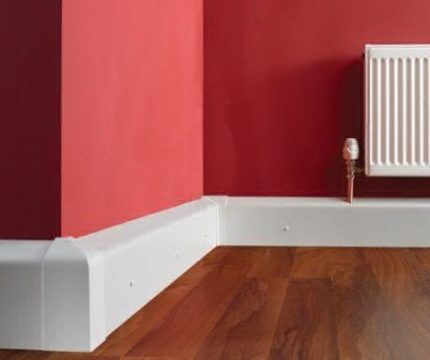
The most popular methods of hiding pipes are boxes made of different materials, as well as the use of decorative elements, for example, rings, ropes or ropes, stained glass windows.
We will consider the nuances of decorating heating elements below.
Features of factory products and homemade products
All structures designed to hide heating systems can be divided into two large categories: ready-made devices and specially made boxes.
Option #1: factory-ready devices
Such devices are purchased in specialized stores, where a large assortment of products of different colors, sizes and designs is presented. The shape of such structures can be angular, rounded or rectangular.
The first option is especially convenient in the corners of the room for masking risers, and also if the heating system is located close to the ceiling or floor. Other modifications are perfect for pipes that are laid around the perimeter of walls and a free-standing riser.
Various solutions are being practiced. Parts suitable for decorating pipes polymer air ducts factory made. When choosing such options, it is advisable to pay special attention to the quality of the material, since low-grade polymers under the influence of heat can turn yellow, swell and lose their appearance
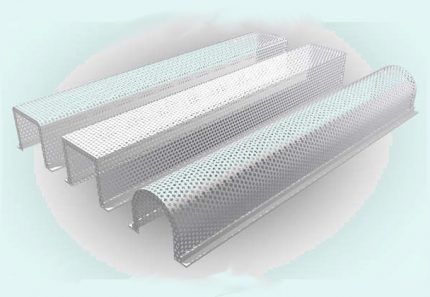
Boxes made of regular or perforated metal look very impressive. If a practical goal is being pursued, it is better to give preference to the second option, since thanks to the holes, metal elements provide better heat transfer.
Another option is budget designs made from MDF, which have an attractive appearance and good performance. The disadvantages include a small model range, which is dominated by “blind” devices without holes, which reduces heat transfer.
Option #2: self-made structures
Despite the significant selection of ready-made boxes, hand-made designs are very popular. They not only allow you to save money, but also allow you to ideally solve the problem of how to ideally hide heating pipes in the interior, taking into account the exact dimensions and style of the room.
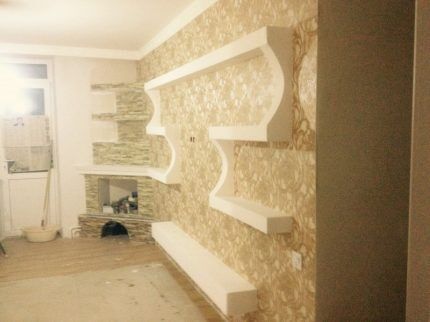
The most popular materials include:
- Brickwork. An effective, but rather complex method of camouflage, which will require a lot of work. In addition, such a box can hardly be disassembled if necessary.
- Drywall. By far the most common material.
- Plastic lining, mounted on a frame made of metal or wood.
- Boxes made of natural wood. Eco-friendly designs that decorate any interior; usually made to order.
The most common include plasterboard boxes, which are easily installed around pipes on a metal profile frame. The choice of material for manufacturing depends both on the room design project, as well as on personal preferences and financial capabilities.
DIY plasterboard box
The easiest way to hide the heating system is in structures made of plasterboard. This material is attractive due to its combination of ease of processing, excellent performance properties, and relatively low cost.
You will find instructions for assembling protective and decorative structures in bathrooms in the article, the contents of which we recommend that you familiarize yourself with.
Another important advantage is the compatibility of plasterboard boxes with various finishing methods, which allows the structure to fit perfectly into any interior.
To make a plasterboard box you will need the following materials and tools:
- screwdriver;
- scissors (cutter, hacksaw) and drywall plane;
- sheets of plasterboard (for the bathroom and kitchen it is better to take moisture resistant, for other rooms - standard);
- wooden beams (metal profile);
- dowels, self-tapping screws for fastening the structure;
- building materials for filling, priming, finishing;
- skirting boards.
Decorative accessories will also help improve the appearance of the structure, with the help of which you can disguise the joints of the box with the walls/floor (sockets, overlays, rings, plugs). The work is carried out in several stages.
Step 1: preparation for work
First of all, you need to determine the dimensions of the structure, for which precise measurements of the heating pipes are carried out. When calculating the parameters of the device being manufactured, it is important to add a few centimeters to the depth and width indicators for a free fit: heating pipes should not touch the walls and frame components.
In accordance with certain dimensions, wooden planks or metal profiles for the frame are cut, as well as sheets of drywall are cut (in this case, a minimum number of seams should be allowed).
Step 2: assembly of the structure
The starting profile, which will serve as the basis for assembling the frame, is fixed to the floor. Other parts of the structure are attached to it, creating a sheathing.
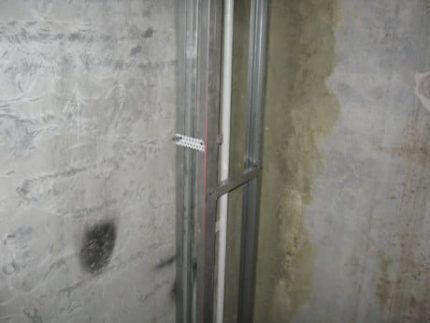
The edges of the cut plasterboard parts are processed with a special plane for this material, after which they are applied to the frame base and fixed with self-tapping screws.To protect the edges of the slabs from damage, the corners of the device can be glued with special overlays, which are made of perforated metal.
Step 3: Shutdown
Finally, finishing work is carried out. The joints between the slabs of the structure, as well as the entry point, are covered with putty.
After this, the surface of the box is primed, and then the finishing is done (painting, wallpapering, decorative plaster coating). The final touch for a neat look is to install skirting boards at the junction of the boxes with the wall and/or floor.
Construction made of plastic panels
In places where there are a large number of people (for example, in public buildings), as well as in corridors and bathrooms, structures made of durable plastic panels where heating systems are hidden look appropriate.
It is advisable to install such devices in parallel with the cladding of the room, since in this case it is possible to predict the rational consumption of finishing material. Installation of boxes is carried out in stages.
Step 1: securing the frame
First of all, a sheathing made of wooden beams with a cross-section of approximately 40x40 millimeters is attached to the ceiling and walls. These elements are fastened to the walls and ceiling using dowels equipped with a polymer sleeve. After attaching the beams, they are aligned in the horizontal and vertical directions.
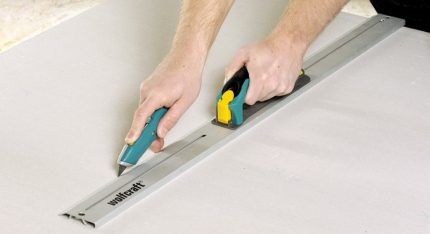
In places (on the floor and walls) where heating communications are located, additional support beams are installed, to which frame racks located lengthwise and crosswise will be attached.
Step 2: paneling the frame
Having installed the frame, you can proceed to covering with panels, which is done as follows. Panels cut to the height of the box are installed on the side plane so that they are in a vertical position. You can fasten polymer parts using small nails, special adhesive mixtures, or a construction stapler.
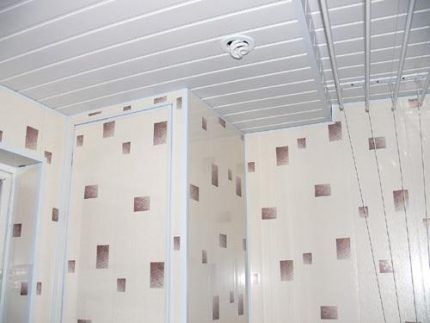
The last stage is the installation of special elements at the corners designed to hide the cut edges, thanks to which plastic boxes for heating pipes acquire a neat appearance.
Application of natural wood
Structures made from natural material look great in any interior, but it must be taken into account that wood is a poor conductor of thermal energy. To improve heating, it is recommended to use open top units or large mesh grilles.
It is also important to take into account that high temperatures have a negative impact on wood materials. Under their influence, the wooden box can gradually dry out and become deformed, and the paint can swell.
To avoid this, you must ensure that the device is not adjacent to the elements of the heating system: wooden slats should be 3-4 cm away from them.
Decorative covers for heating pipes
The most problematic area when laying communications is considered to be the area near the entrance and exit of the heating pipe: in this place it is extremely difficult to make a neat cut and lay the flooring evenly.
Advantages of decorative elements
You can avoid an unaesthetic appearance by decorating the joint with decorative overlays specially designed for heating pipes.
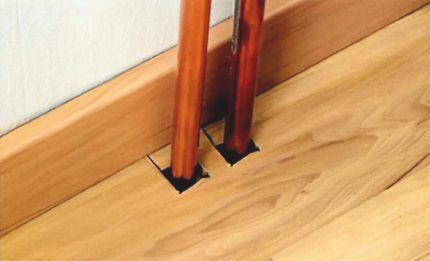
Such details not only give the room a neat look and decorate the interior, but their wide range allows you to find a model that matches the style of the room - from classic to art nouveau and avant-garde.
In addition, the pads are extremely practical. When carrying out general cleaning, cosmetic repairs or changing the coating, parts can be removed, and after completion of work they can be washed and reinstalled.
Materials for making overlays
Decorative products can be made from different types of materials.
The most common elements for the manufacture of which are used:
- plastic;
- MDF;
- various types of wood.
Depending on the design, decorative products may have a corrugated, smooth, or polished surface; be plain, with patterns or imitation of various materials (stone, mother-of-pearl, cork).
The most expensive are wood overlays. To replace them, you can use MDF parts that imitate wood structure, but you must keep in mind that the service life of the latter is much lower (5 years versus 10 for natural wood).
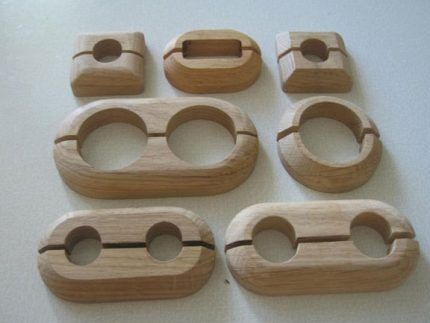
When choosing decorative covers for heating pipes, you must carefully select their size, which should correspond to the diameter of the pipes, and also pay attention to the consistency of color and texture with the design of the room.
Tips for installing decor
Elements in the form of rings (they are also called rosettes) have a collapsible design. As a rule, they consist of two parts connected using internal locks. The structure is disconnected, put into the girth, after which the gap is closed and the element snaps into a fixed position.
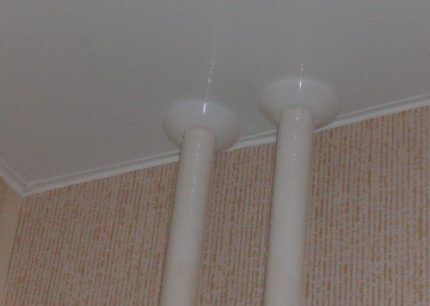
Installation of such products takes a minimum of time (no more than one minute) and is not difficult. It can be carried out even by beginners who have never done repair work. If necessary, the element can be easily removed by opening the lock.
In addition to rings, other types of masking of joints can also be used, for example, decorative binding made of jute rope or parts made of special heat-resistant fabrics. Such design options have an original appearance and are also characterized by good thermal insulation properties, which helps reduce heat loss.
Options for masking old pipes
It is not recommended to wall up metal pipes that have been laid for a long time in walls or place them in boxes due to the high risk of possible leaks. In this case, you can use your imagination to creatively decorate such structures.
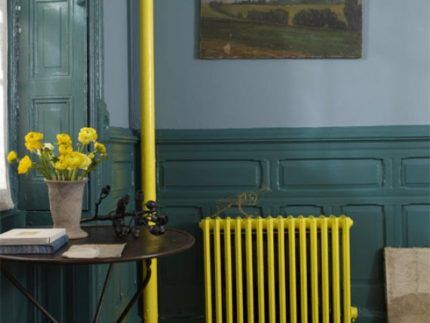
The simplest way is heating appliances painting and pipes to match the color of the surrounding walls, which allows the structure to blend into the background and not be conspicuous. To do this you should choose paint non-toxic, heat-resistant, resistant to mechanical stress. Acrylic and alkyd enamels, as well as water-dispersion coatings, are well suited.
The pipes can be decorated with ropes or ropes, or beautifully crafted artificial branches and/or flowers can be added to liven things up (it is important that they can withstand high temperatures). It must be taken into account, however, that such finishing reduces the heat transfer of the system.
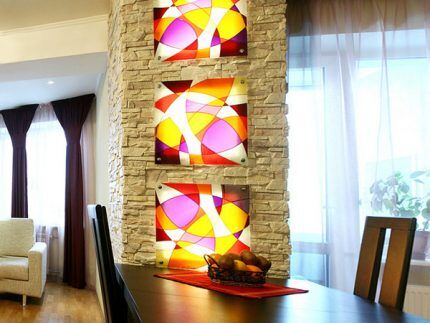
You can also decorate pipes using bamboo split along the length, which is attached to the pipe and decorated with additional elements depending on the imagination of the owners.
Pipes laid horizontally under the ceiling can be disguised by hanging curtains slightly higher than usual.
Conclusions and useful video on the topic
The videos below demonstrate the manufacturing process of the most commonly used boxes for masking heating systems: plastic and plasterboard.
Video #1. Instructions for masking pipes behind plastic panels:
Video #2. Compact box made of waterproof plasterboard:
To hide heating pipes, it is important to choose the most effective method of disguise. It will not only remove utility lines from view, but also decorate the apartment.By investing taste, imagination, and creativity, you can choose a unique finish for decorating pipes, even without special skills in carrying out repair and construction work.
Please write comments in the block below. Tell us about how you hid the heating system pipes in your own city apartment or country house. It is possible that your valuable recommendations will be useful to site visitors.




Yes, indeed, often, if the interior is not in the loft style, then the pipes stand out from the general style of the interior. Rarely are they able to decorate a room openly. It’s good that many ideas have now been invented to hide the entire set of communications. Plasterboard overlays look very nice. But for some reason the design of plastic panels reminds me of the interior of hospitals.
Interesting ideas, but we have all the pipes hidden in the floor. Of course, in the future, if we change the heating pipes, we will simply install new ones, but above the floor. Then you can think about how best to hide them. Our batteries are hidden using a box with a grid, so neither pipes nor batteries are visible. The bath is a little different. We placed a box where the entire system for adjusting the flow and return is hidden; to get to it, you just need to open the door.
I don’t understand what year this article is? Why is such nonsense written at the very beginning? I didn't even read it. Are plastic pipes dangerous due to fittings? And the fact that a cross-linked polyethylene pipe can be 1 km long without any need for fittings? What other pipe can do this?
What specifically did you find wrong with the material? Yes, cross-linked polyethylene pipes are a good and modern material, but how can you make a cross or tee without fittings?
If you read the article carefully, and not diagonally, then the emphasis here is on the fact that the pipes are hidden behind decorative boxes. Actually, this is what the very title of the article says. What does this have to do with 1 km long pipes without fittings, please explain? We are talking about the pipes of the heating system of a house or apartment. Where you simply cannot do without adapters and fittings.
Although no, sorry, you can install a heating system without adapters and fittings: we drill the walls where necessary and connect directly. Have you seen this anywhere? I can share with you an example of “work” when “masters” save on fittings and adapters.
If the pipes are located behind the box, then the leak will be difficult to eliminate, and it forms in places where adapters or fittings are poorly connected.